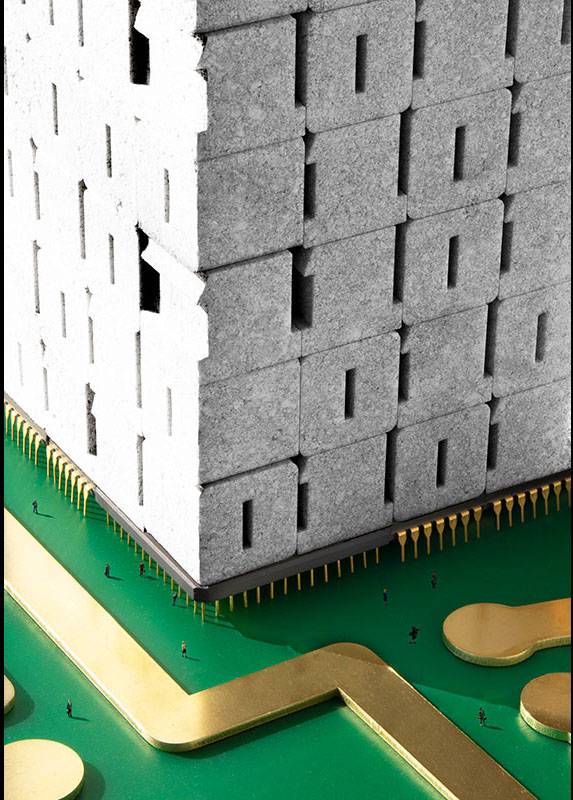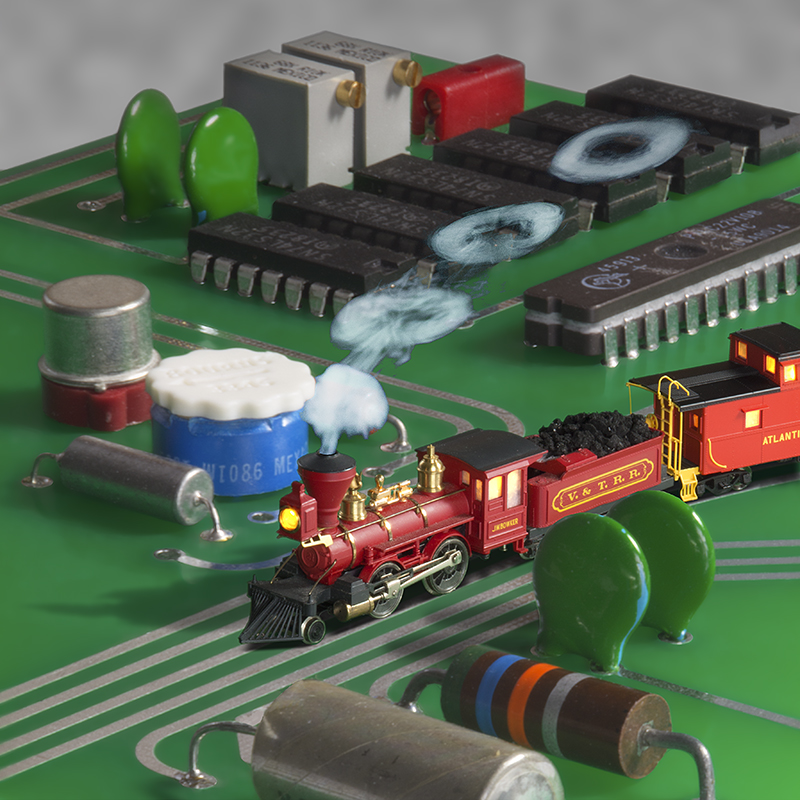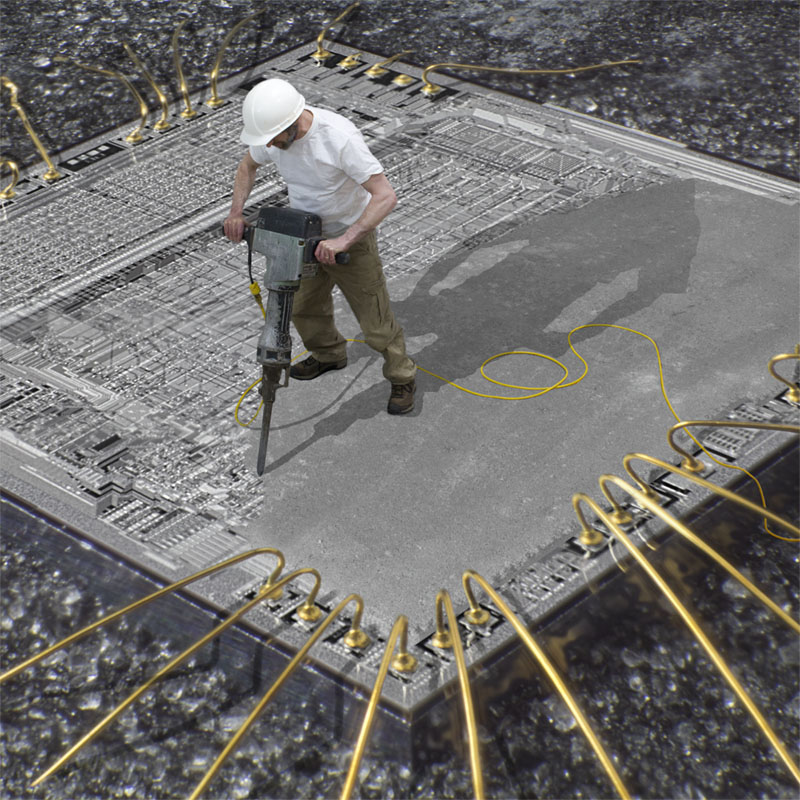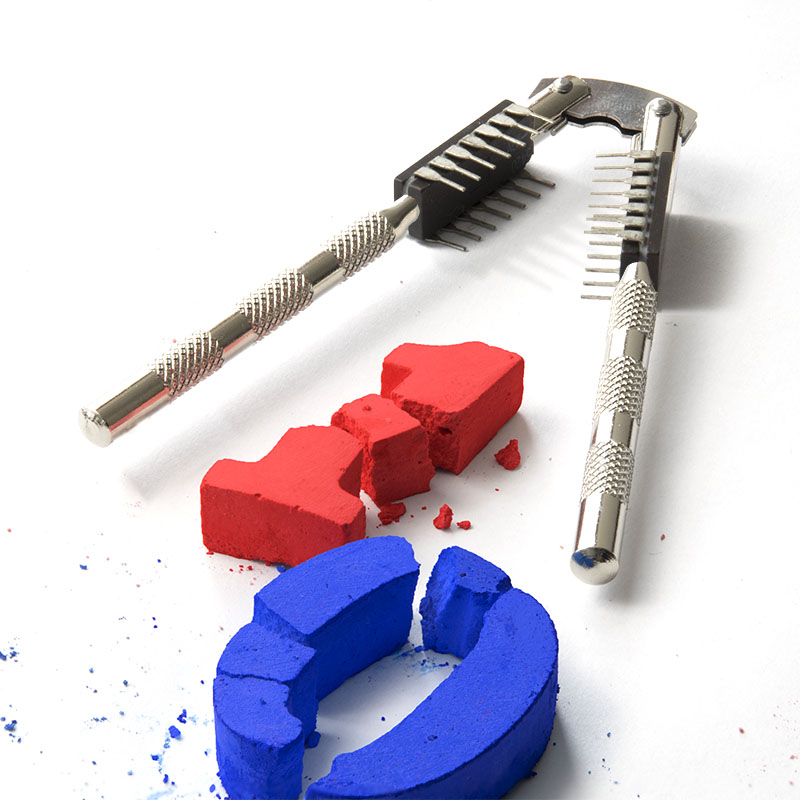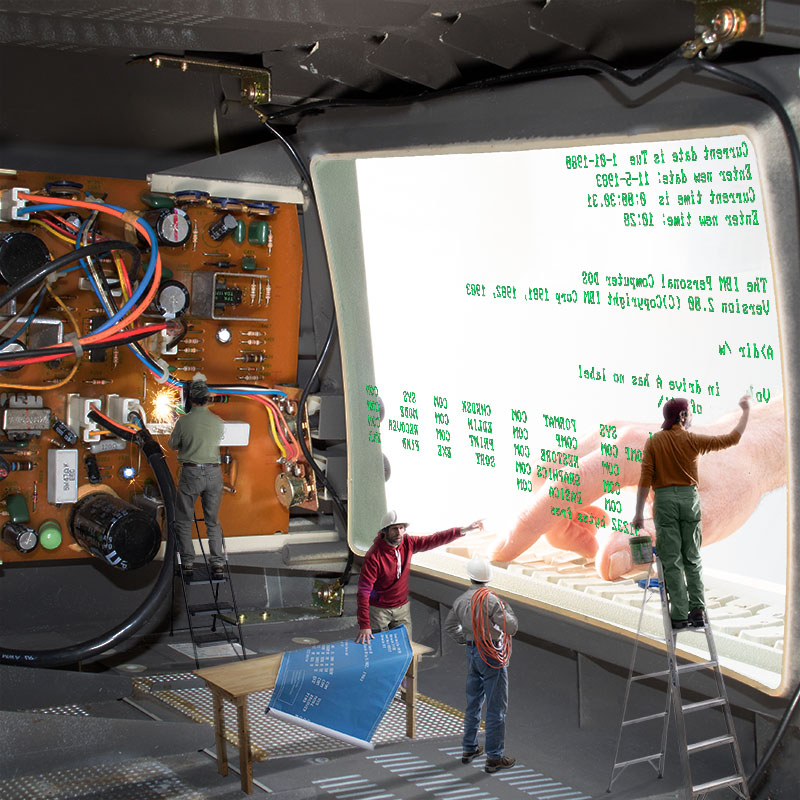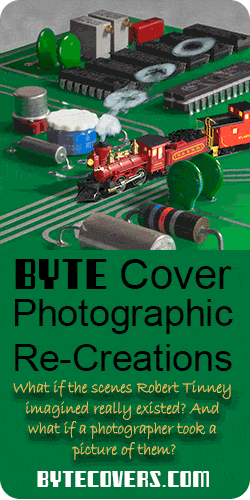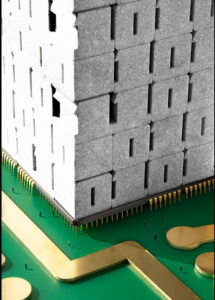 I’ve been re-creating Robert Tinney’s Byte magazine paintings as photographs. My latest work is “CPU Architectures”.
I’ve been re-creating Robert Tinney’s Byte magazine paintings as photographs. My latest work is “CPU Architectures”.
Byte’s May 1988 issue had a a series of articles about CPU architectures. Mr. Tinney painted an urban scene of a building made of binary digits, resting on a foundation of integrated circuits. As I’ve done with Inside IBM, Computer Engineering, Chip Building, and Number Crunching, I re-created Tinney’s vision as if it were real, and as if a photographer had been standing next to Tinney as he painted.
(Mr. Tinney has given me permission to sell my photos. You can visit my store at bytecovers.galacticstudios.org.)
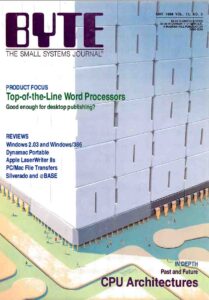 My biggest artistic struggle with this picture was the building. Mr. Tinney painted it as pure white. I 3D printed a model of the building in white, but it looked fake. It wasn’t just that it was 3D printed plastic; it’s that it was white. So I photographed concrete blocks and superimposed their texture on the model. It’s not completely faithful to Tinney’s painting, but it looks more real.
My biggest artistic struggle with this picture was the building. Mr. Tinney painted it as pure white. I 3D printed a model of the building in white, but it looked fake. It wasn’t just that it was 3D printed plastic; it’s that it was white. So I photographed concrete blocks and superimposed their texture on the model. It’s not completely faithful to Tinney’s painting, but it looks more real.
An additional issue was that Tinney’s integrated circuits did not match real size chips. He has an 8 pin DIP (4 pins visible) being half as long as a Pin Grid Array chip (PGA) with 14 pins visible on an edge. At the time he painted this, he likely used an 80386 as a model. But those chips had 0.1″ pin spacing. Even if he had a PGA with 0.05″ pin spacing (which I don’t think were widely available in 1988), the comparable sizes of the PGA and the 8 pin DIPs don’t make sense. Clearly, he took some artistic license. Since I was photographing real ICs, my artistic license application was turned down.
Here are all my covers to date:
